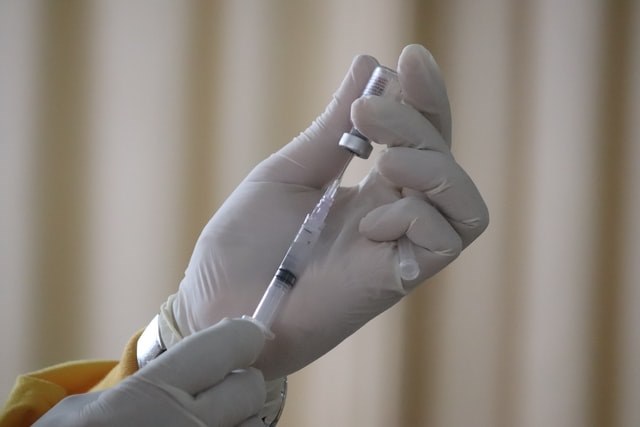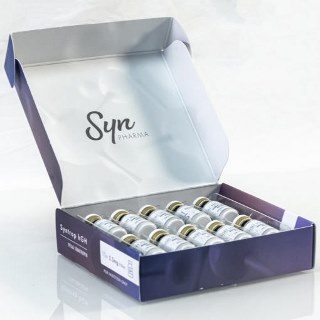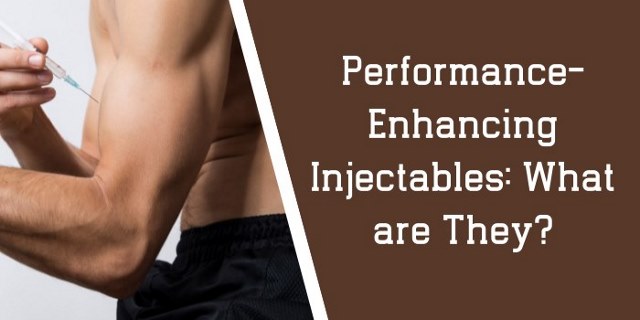Today’s world is more competitive than ever before, pushing individuals to exploit whichever competitive advantage they have. Among the routes they turn to for a competitive edge is using performance-enhancing drugs to boost their physical and mental capacities.

According to one survey, approximately 3-4 million Americans use performance-enhancing drugs, including high school students. Moreover, such drugs are readily available with platforms like Canadian Anabolics is selling performance-enhancing injectables online.
However, are such drugs safe and legal, and do they work? Keep reading to find out all you need to know about performance-enhancing injectables and whether you should take them.
What Are Performance-enhancing Injectables and How Do They Work?
Image and performance-enhancing drugs (PIEDs) are chemical substances administered to boost elements of physical and mental capacities, including strength, speed, muscle mass, cognitive functions, and memory. Some experts may refer to such drugs as ergogenic aids and describe them as energy-boosting compounds.
Therefore, performance-enhancing injectables are ergogenic aids administered via injection. Below are the types of IPEA drugs available to interested consumers.
Anabolic Androgenous Steroids (Anabolic Steroids)
Anabolic steroids are artificial forms of the natural hormone testosterone, a steroid sex hormone that supports multiple functions, including bone mass, muscle function, and fat distribution.
The synthetic hormone is available in various consumable forms, including oral tablets, topical products, and injectables. However, injectable anabolic steroids are the most potent and have lingering effects. Canadian anabolic steroids are prescription drugs; therefore, buying steroids online Canada is straightforward if you have a valid prescription.
Anabolic Steroids Mechanism of Action
Each performance-enhancing injectable has a unique mechanism of action. Anabolic steroids, for starters, support anabolic functions like hypertrophy while inhibiting catabolic processes like atrophy.
Hypertrophy refers to increased cell size, resulting in the enlargement of the tissue or organ built using the enlarged cell. Testosterone, the anabolic hormone used in anabolic steroids, promotes hypertrophy by modulating transcription, the process by which the enzyme RNA polymerase copies the genetic information necessary for protein synthesis.
Therefore, testosterone and its bioidentical equivalents accumulate the DNA code required for muscle growth. Moreover, the hormone also inhibits catabolic reactions like atrophy or tissue cell degradation and shrinkage.
Second, one study on testosterone’s effect on mice generated fatigue resistance. The primary theory behind this observation is that testosterone stimulates erythropoiesis or the red blood cell production process. According to a second study, testosterone’s influence on erythropoiesis is dose-dependent and more prevalent in senior men.
Ideally, anabolic steroids’ primary purpose is to prevent atrophy or muscle wasting among men with low testosterone levels. However, you can use anabolic steroids to gain muscle without working out, but exercising improves lean muscle mass.

Human Growth Hormone (HGH)
HGH is also a natural hormone produced in the human pituitary glands. It spurs growth in children (below 17 years) but helps maintain healthy body tissues (including muscles) in adults by repairing damaged tissue and regenerating worn-out tissue. Artificial/injectable HGH production is via recombinant protein production, using bacteria to generate synthetic growth hormones.
HGH Mechanism of Action
Like anabolic steroids, natural and synthetic HGH are identical and trigger similar effects. Once injected into the body, HGH triggers the release of the insulin-like growth hormone (IGH-1). IGH-1 modulates metabolism and works with HGH to generate new cells facilitating bone and muscle growth.
Synthetic HGH is a prescription drug for treating stunted growth in children, muscle wasting diseases like HIV in adults, and clinically diagnoses HGH deficiency in adults.
Blood Boosters
Blood boosters are substances like synthetic hormones injected into the body to enhance the blood’s oxygen-carrying capacity. Such substances, when injected, increase hemoglobin concentration; hemoglobin carries oxygen to the cells.
Blood Boosters Mechanism of Action
Essentially, blood booster injections mimic the function of erythropoietin (EPO). EPO is a hormone naturally produced in the kidneys in response to cellular hypoxia or low oxygen levels in the tissue.
Like EPO, synthetic blood booster injections stimulate hemoglobin production. Doctors prescribe synthetic blood boosters to treat anemia.
Why Do People Use Performance-enhancing Injectables?
Ideally, IPEAs are prescription drugs meant for patients with clinically-diagnosed health conditions. However, injectables are more popular as performance enhancement drugs, although this practice is illegal.
The drugs are most popular among professional athletes; one study shows an average prevalence of 18% in blood doping among endurance athletes. Besides athletes, bodybuilders, military officers, and individuals desiring to achieve and maintain a lean, muscular physique are also avid performance-enhancing injectable users.
Consumers primarily use the drugs to help them pack lean muscles within a short period, build muscle strength, maintain muscle size, and accelerate post-workout muscle recovery.

Performance-enhancing Injectables Administration and Dosage
Anabolic steroids require intramuscular injection or injection into a large muscle like the glutes, quads, and deltoid (arm) muscle. Such muscles lower your chances of poking a nerve or blood vessel, especially if you lack medical training.
Steroid doses vary for men and women; women can take 50mg-100mg daily for 1-4weeks, while men take 50mg-200mg for 8-12weeks daily. Experts recommend not exceeding the recommended cycle for your gender.
Next, HGH drugs require subcutaneous injection whereby you raise stomach, deltoid, or thigh skin about two inches before injecting. You can take 0.004-0.006mg/kg of the drug daily for 4-8weeks or start with a modest 0.2mg.
Blood boosters also utilize subcutaneous injections taken for 1-3weeks. However, ensure you wash your hands beforehand or use latex gloves and disinfect the injection site before administering any PIEDs.
Do Performance-enhancing Injectables Work?
People have different goals and expectations when taking performance-enhancing drugs. Moreover, individual-specific effects and different workout routines standardize the duration within which you can notice a change in a challenge.
Also, most individuals use multiple PIEDs at a go. Therefore, adhere to prescribed doses and be patient. Lastly, follow specific instructions on stopping taking the drugs safely to avoid withdrawal symptoms.

Are There Risks To Taking Performance-enhancing injectables?
All PIEDs carry the risk of mild to moderate side effects, but most side effects are reversible if you stop using the drug. Some common anabolic steroid side effects include gynecomastia (enlarged breasts), balding, and low sperm count in men.
On the other hand, women may develop a deep voice and excessive hair growth. Other typical PIEDs-related side effects include blood pressure, mood swings, and mood retention.
Do Performance-enhancing Injectables Show Up In Drug Tests?
According to one expert review, anabolic steroids appear in drug and doping tests because they surpass natural steroid hormone urine levels. However, HGH is more challenging to detect because of its low levels in urine and the fact that HGH levels naturally fluctuate, especially with exercise.
Conclusion
Essentially, performance-enhancing drugs are legal prescription drugs, but the ethical dilemma arises when individuals use such drugs for non-prescribed purposes. However, if you have to use performance enhancers, ensure you buy high-quality products and adhere to recommended doses.
Resources:
https://www.ncbi.nlm.nih.gov/books/NBK538174/
https://www.nih.gov/news-events/nih-research-matters/understanding-how-testosterone-affects-men
https://www.frontiersin.org/articles/10.3389/fphys.2020.00160/full
https://www.ncbi.nlm.nih.gov/pmc/articles/PMC2266950/


 UPDATED October 11th, 2025
UPDATED October 11th, 2025